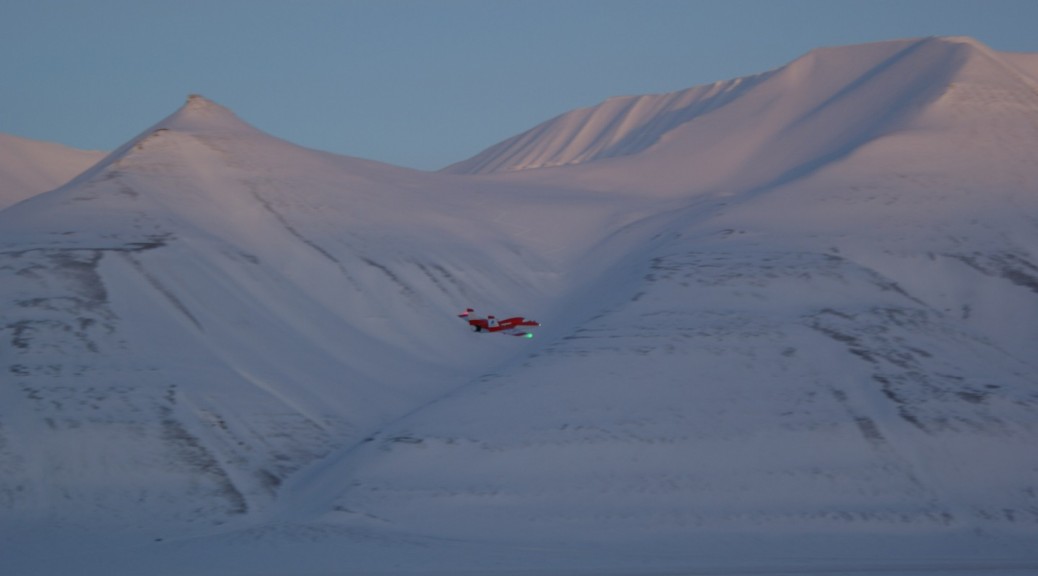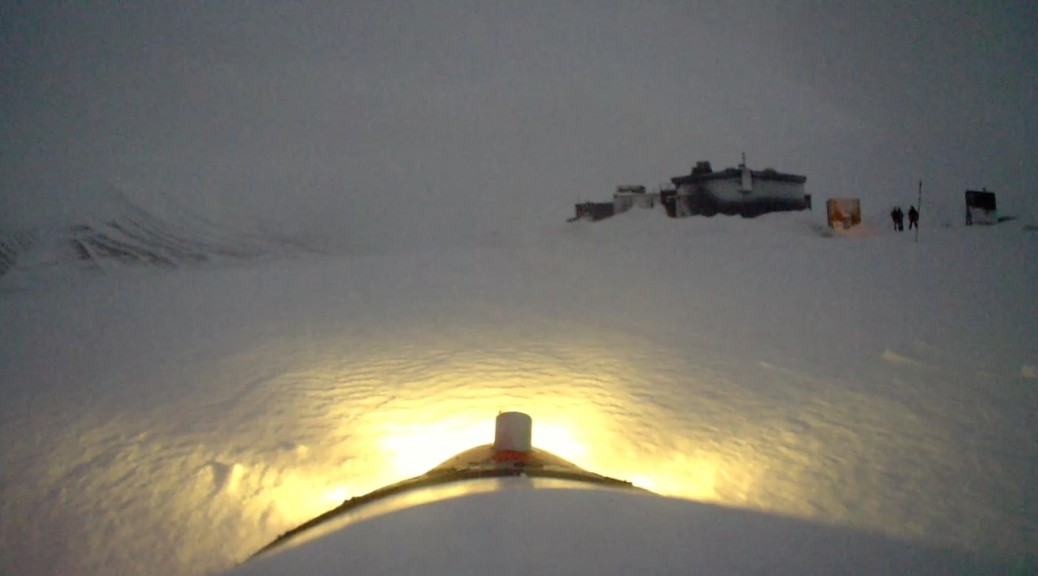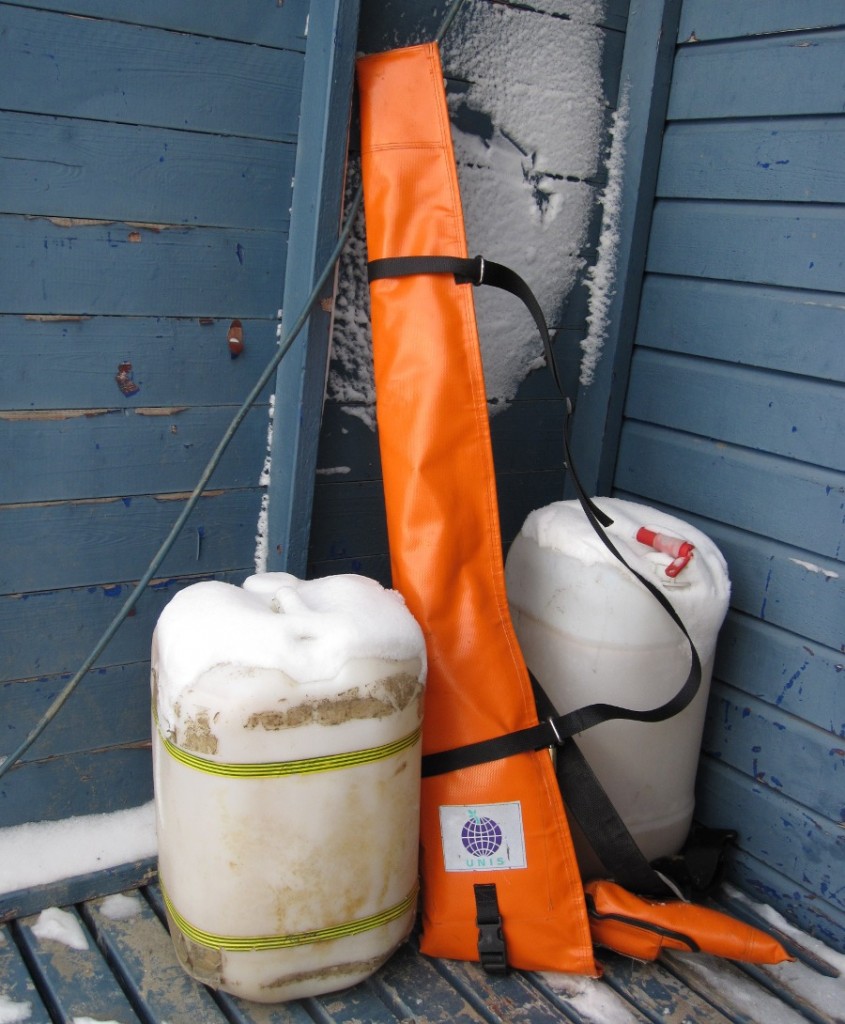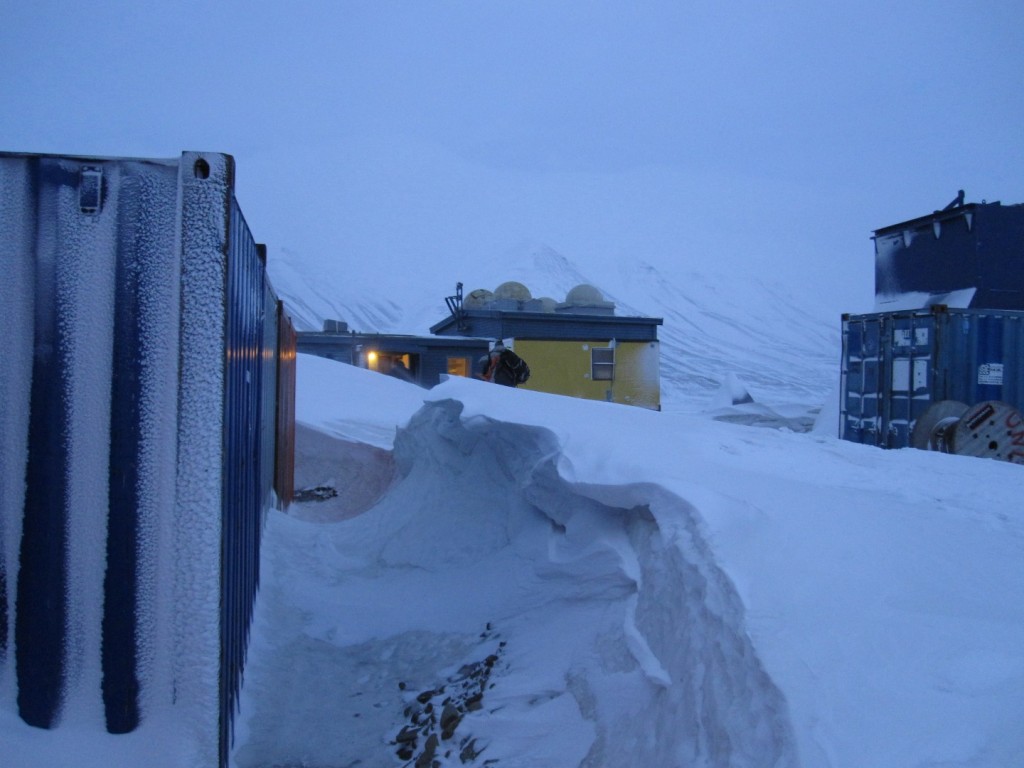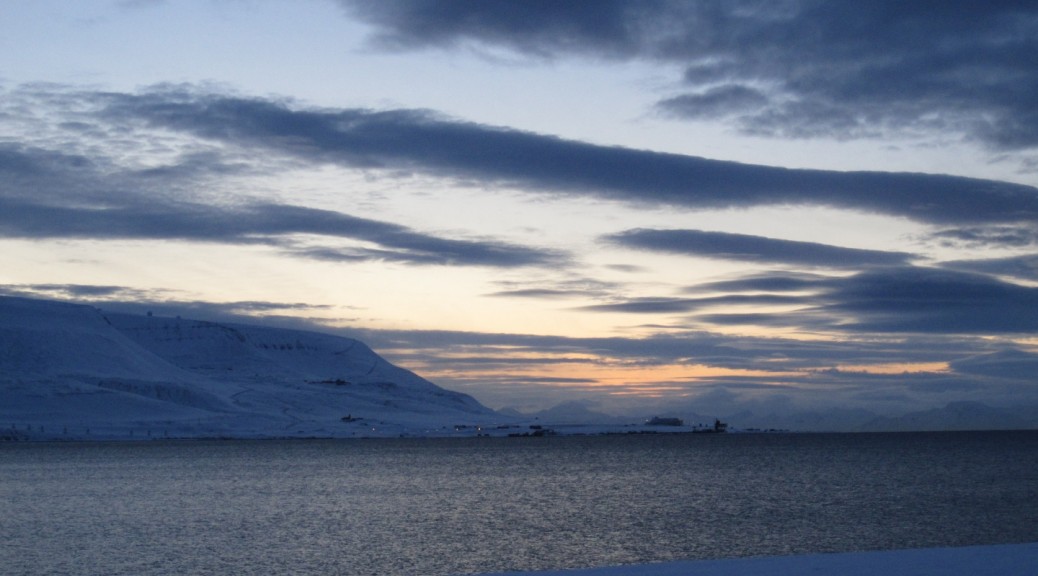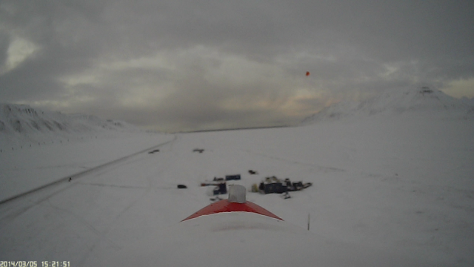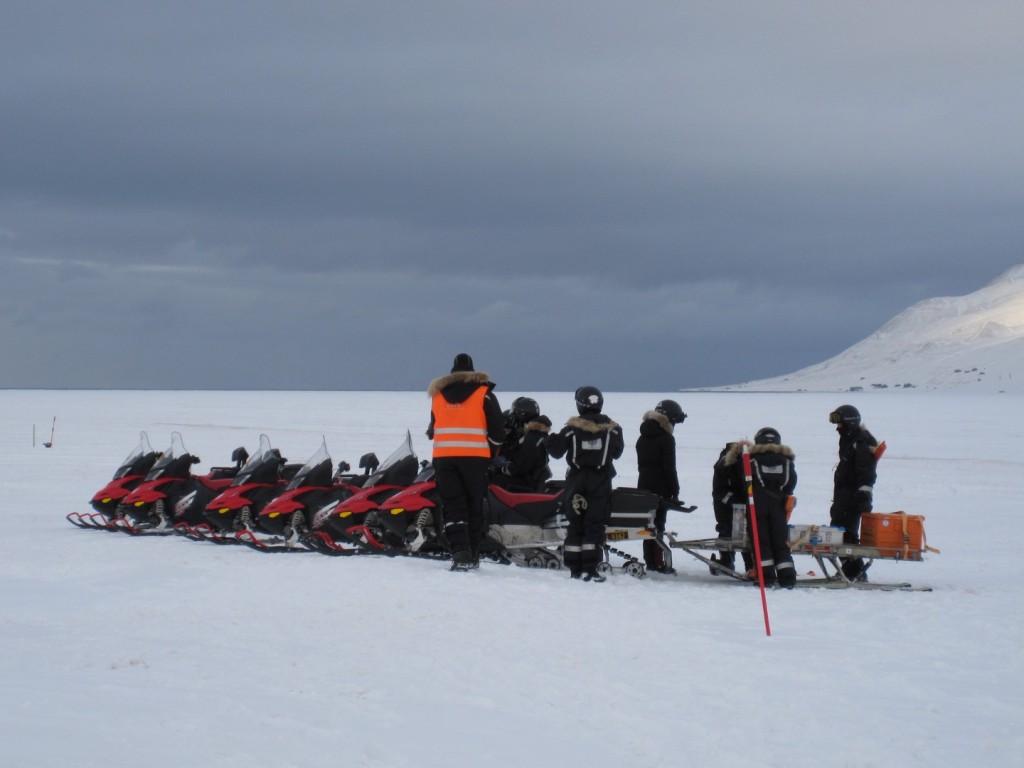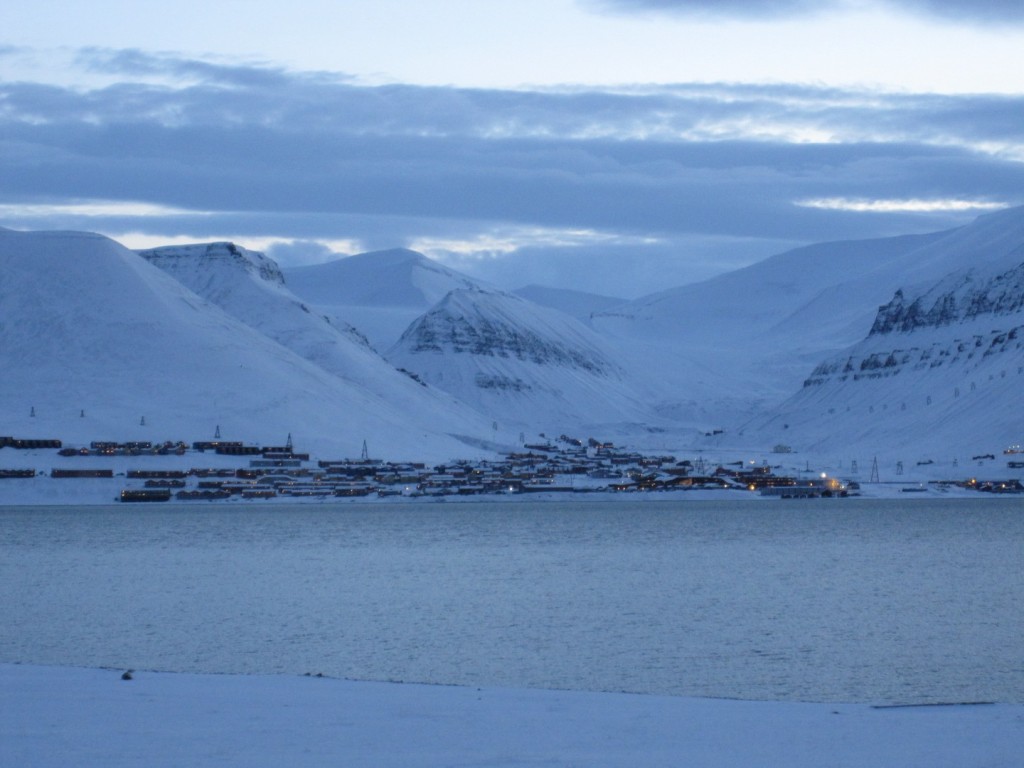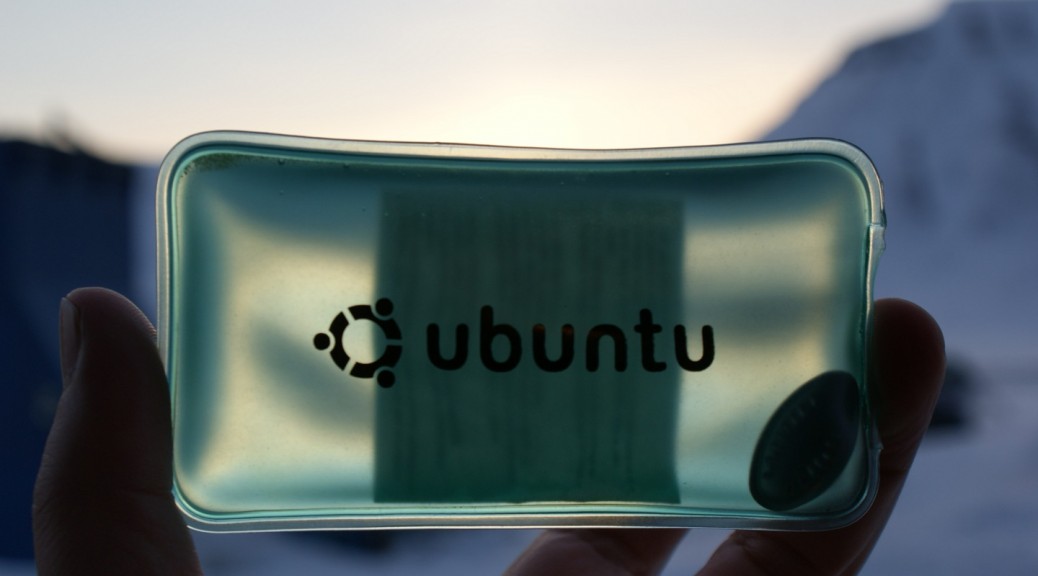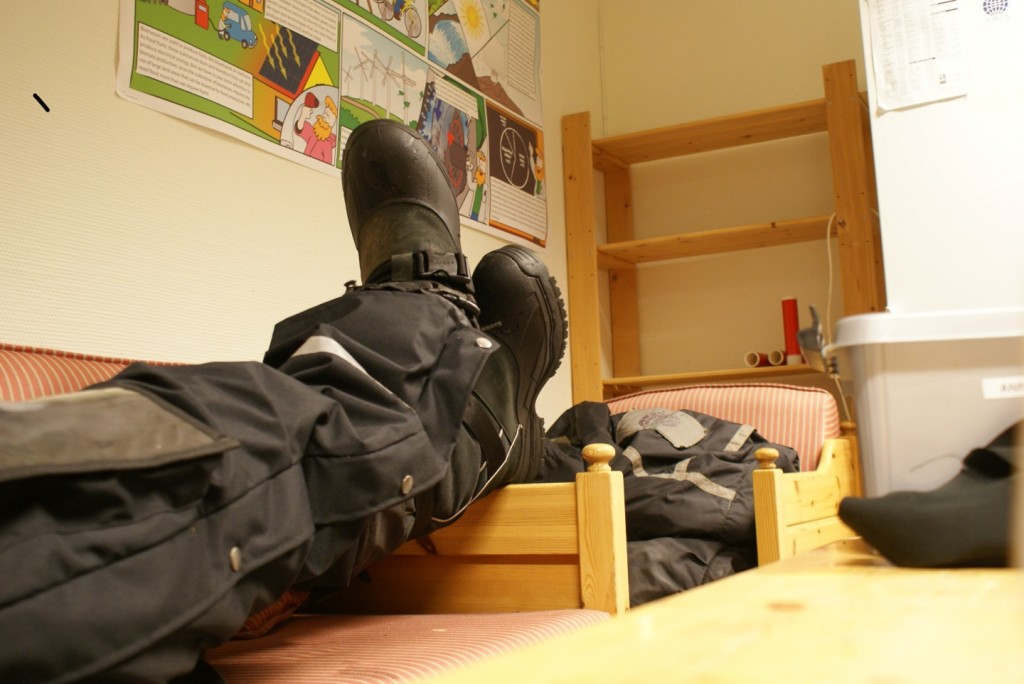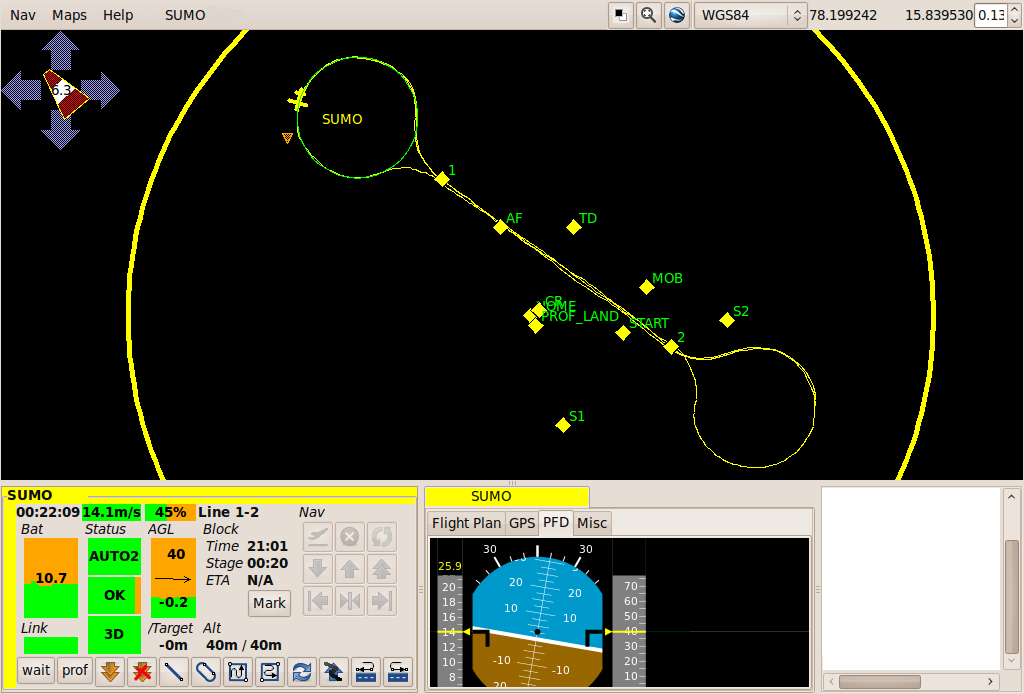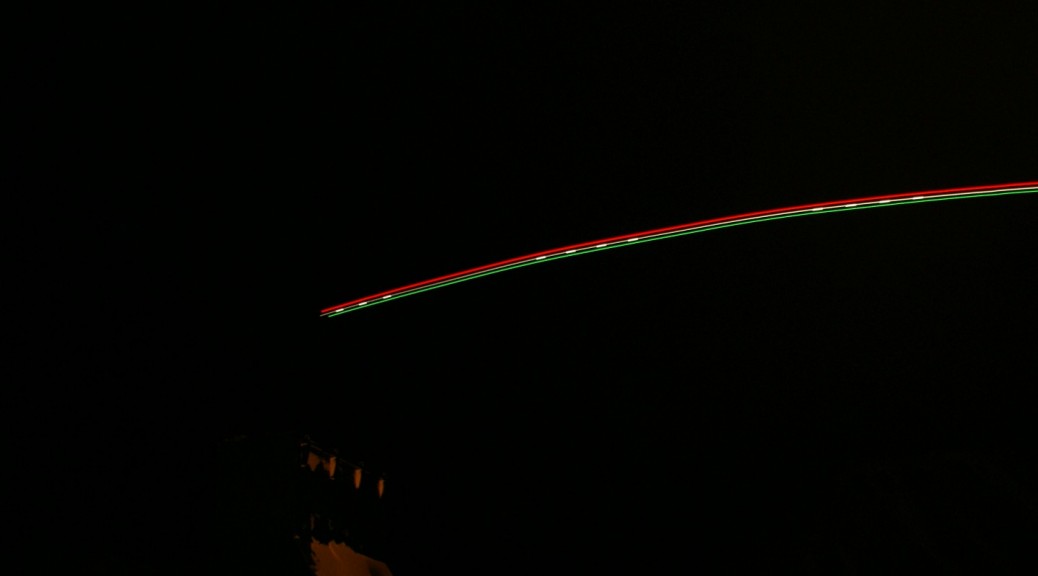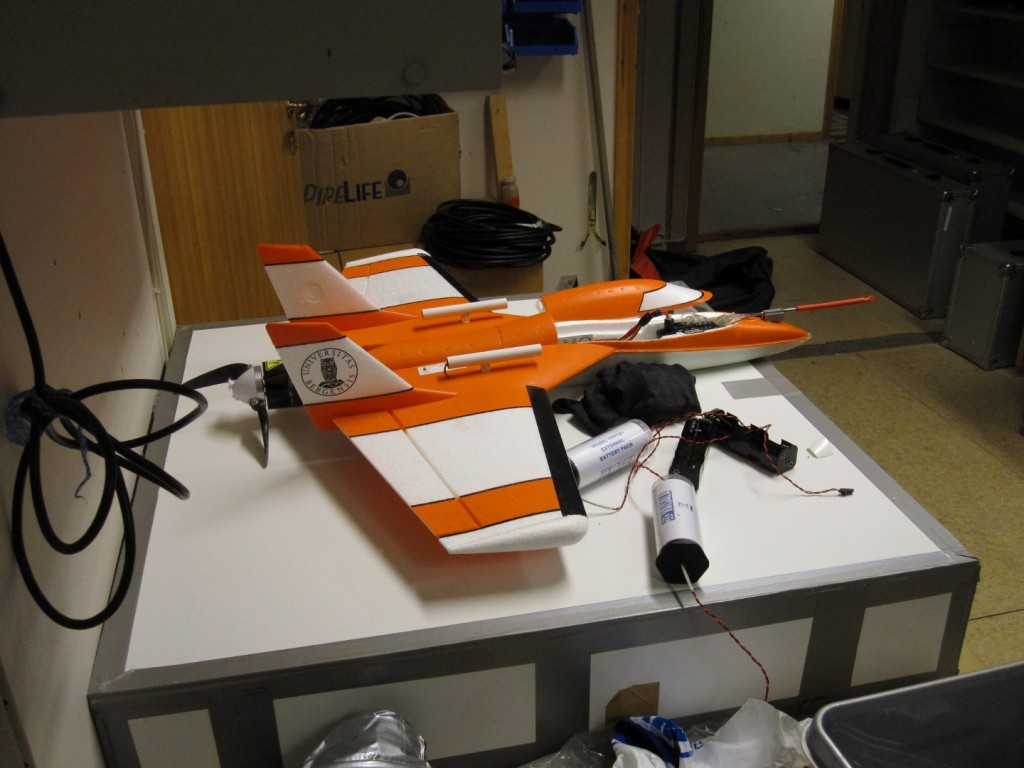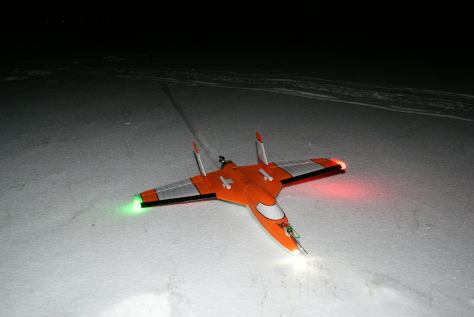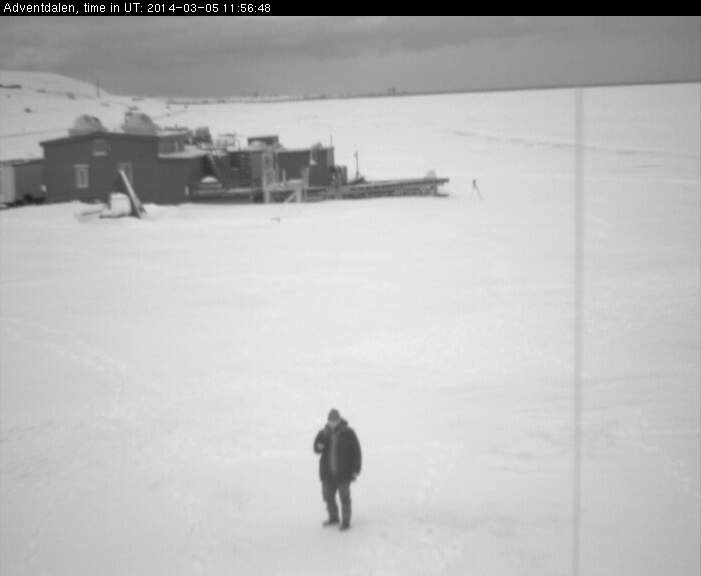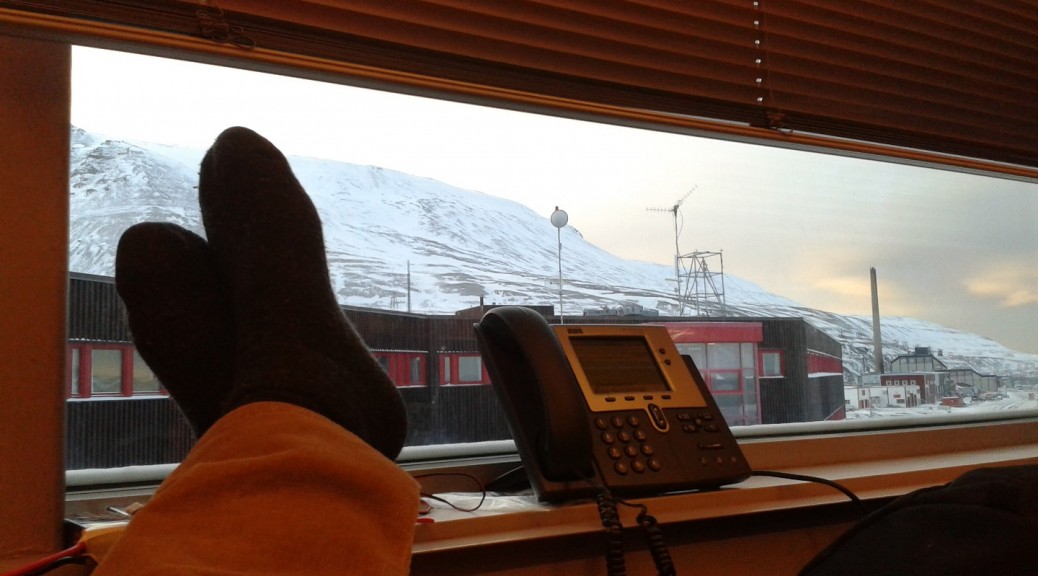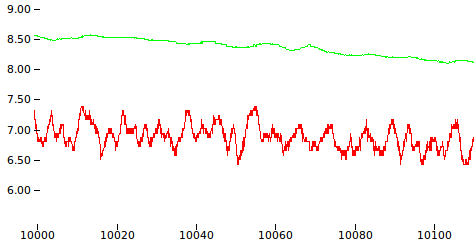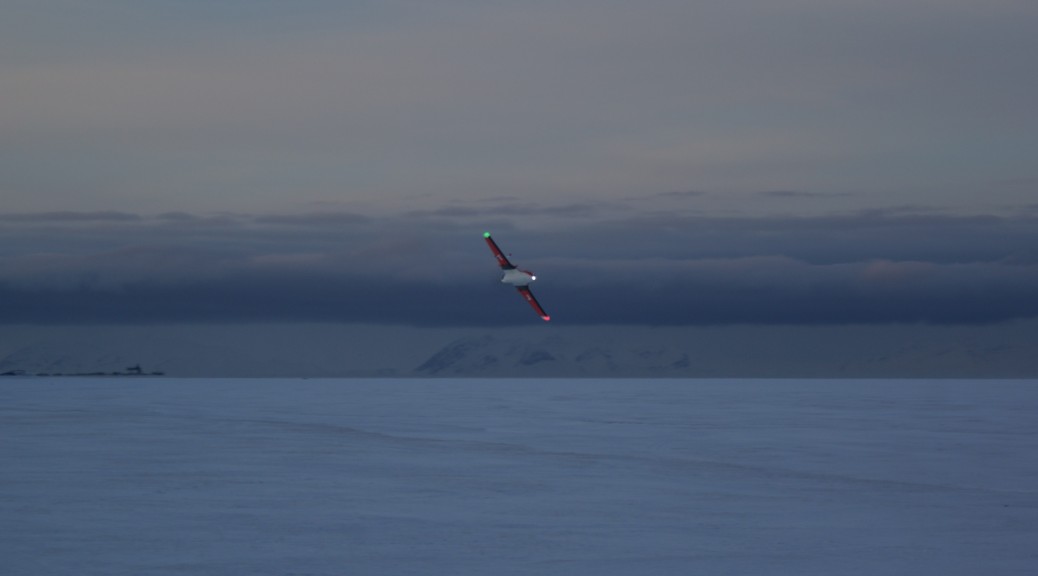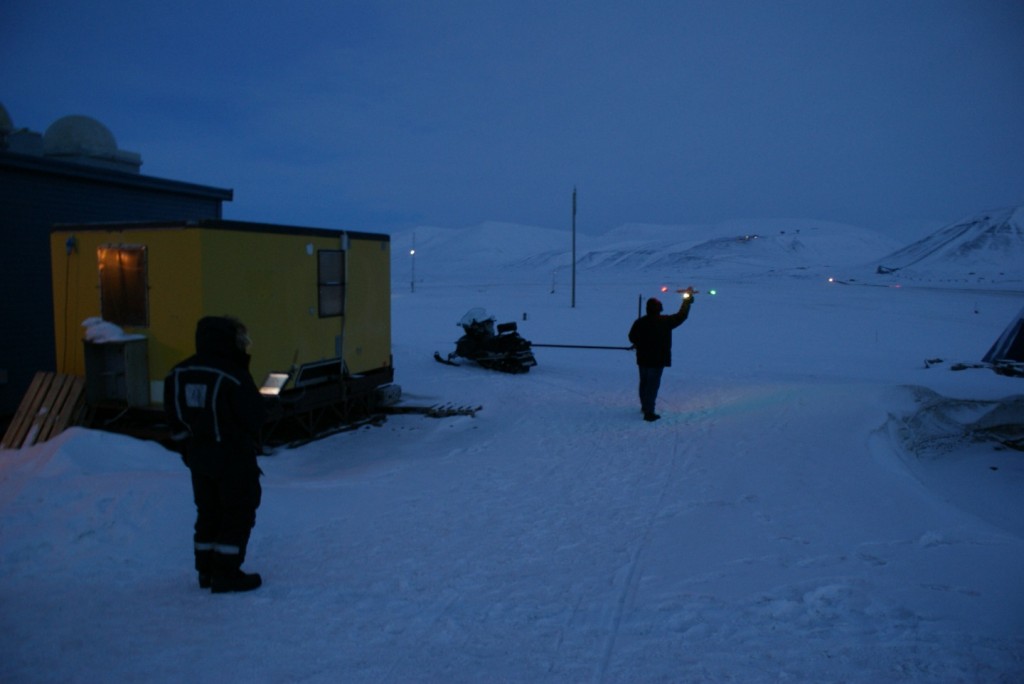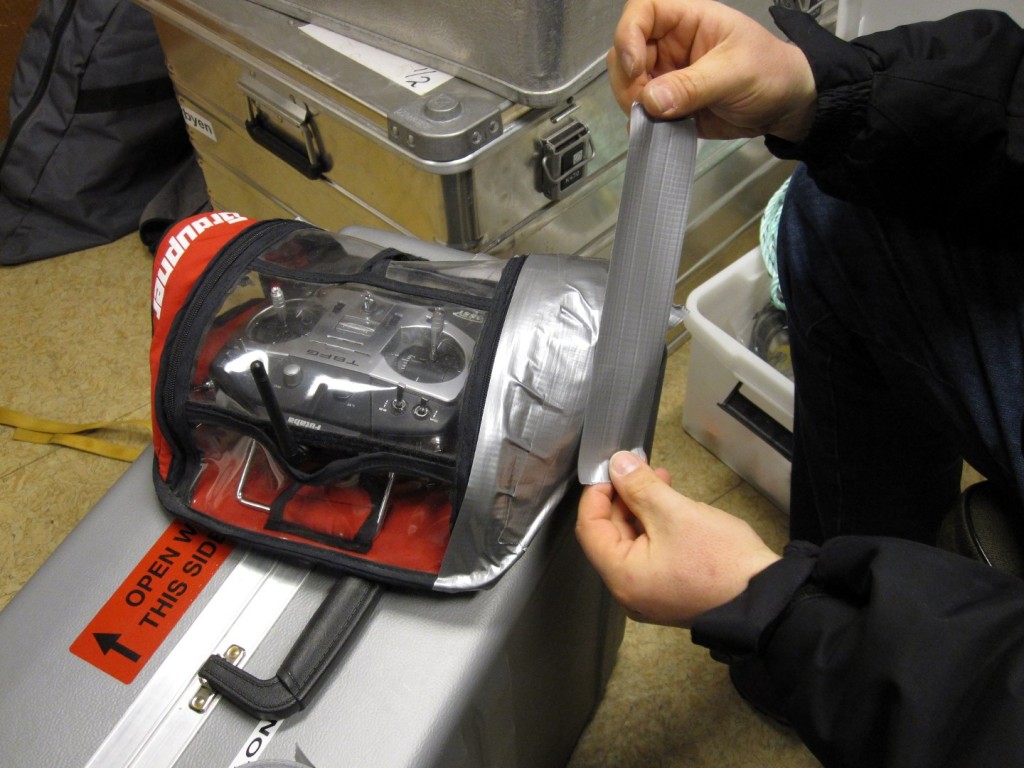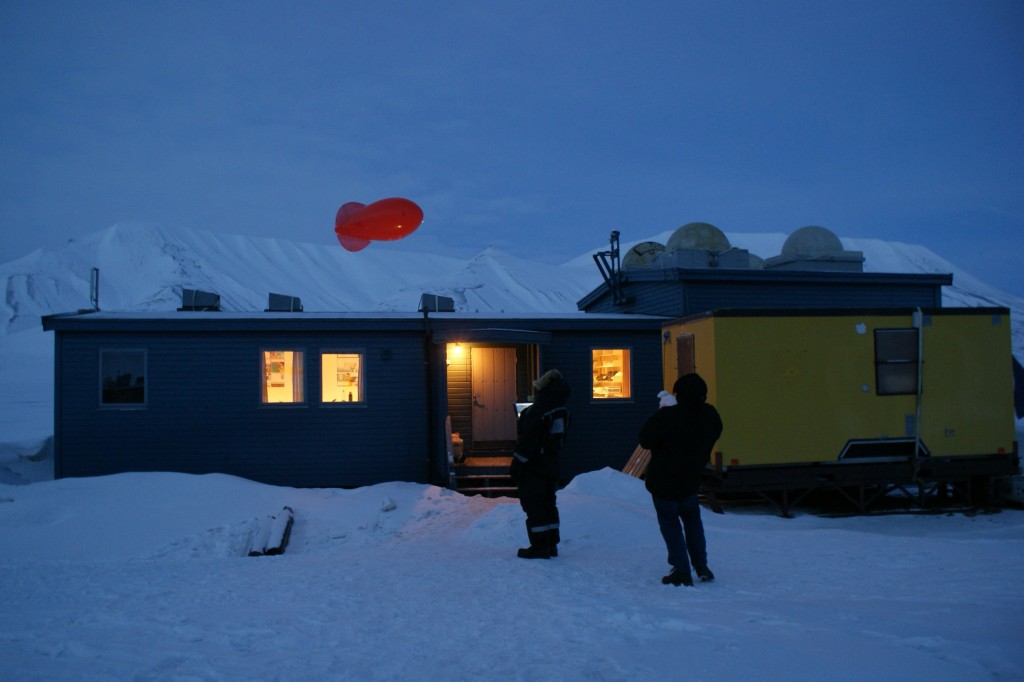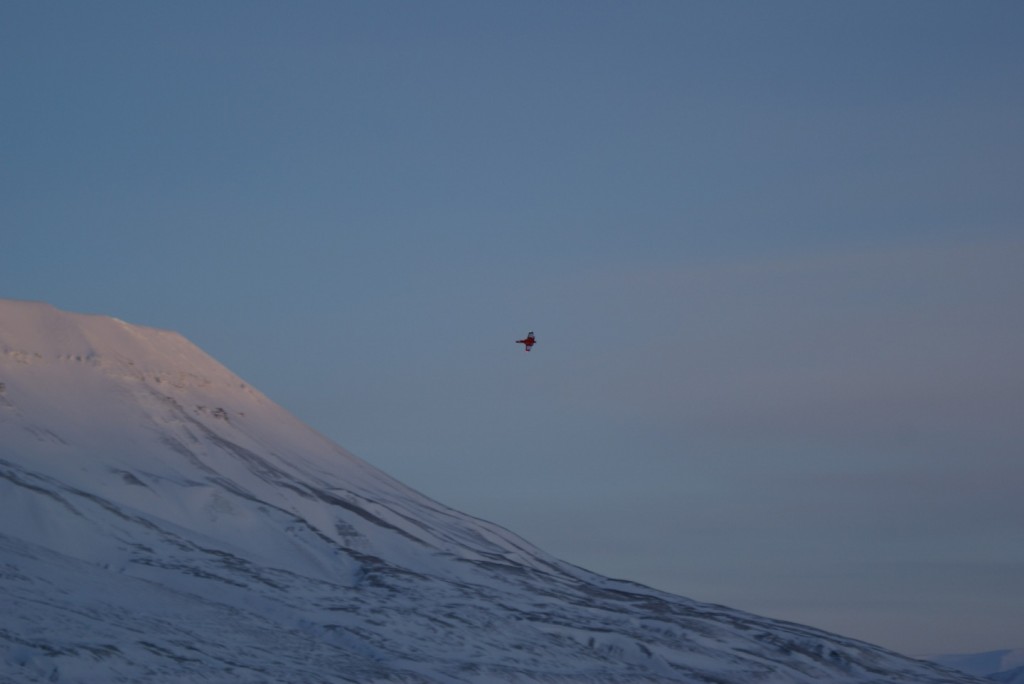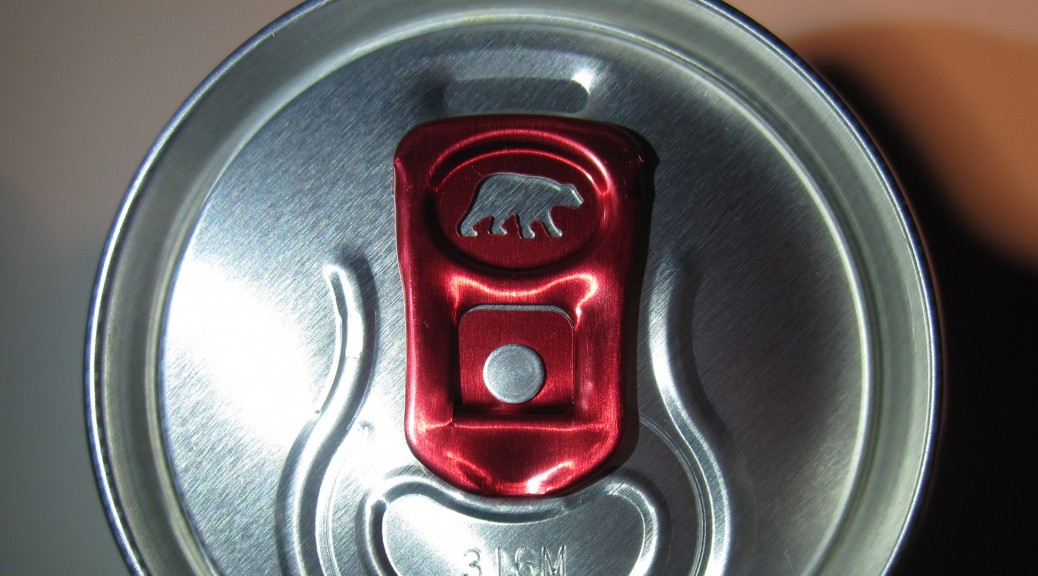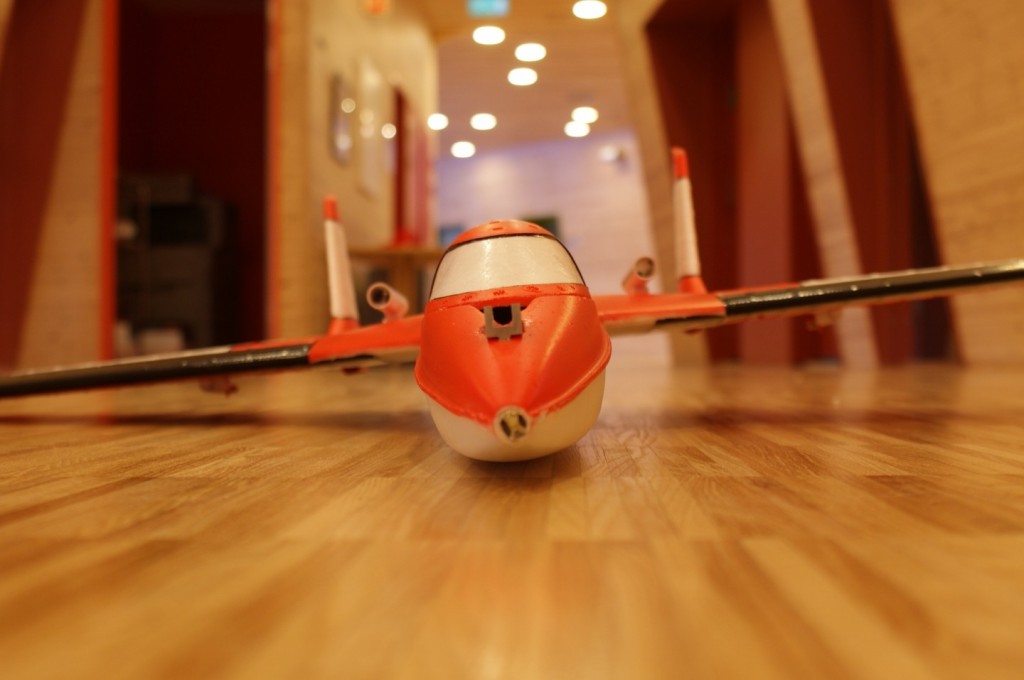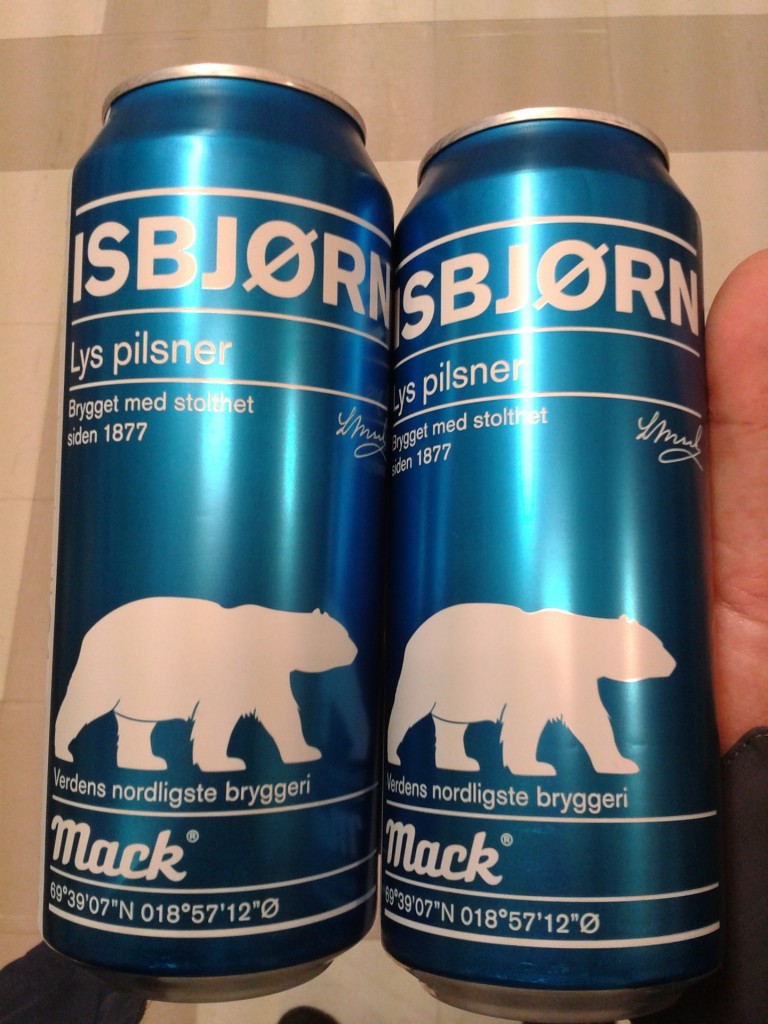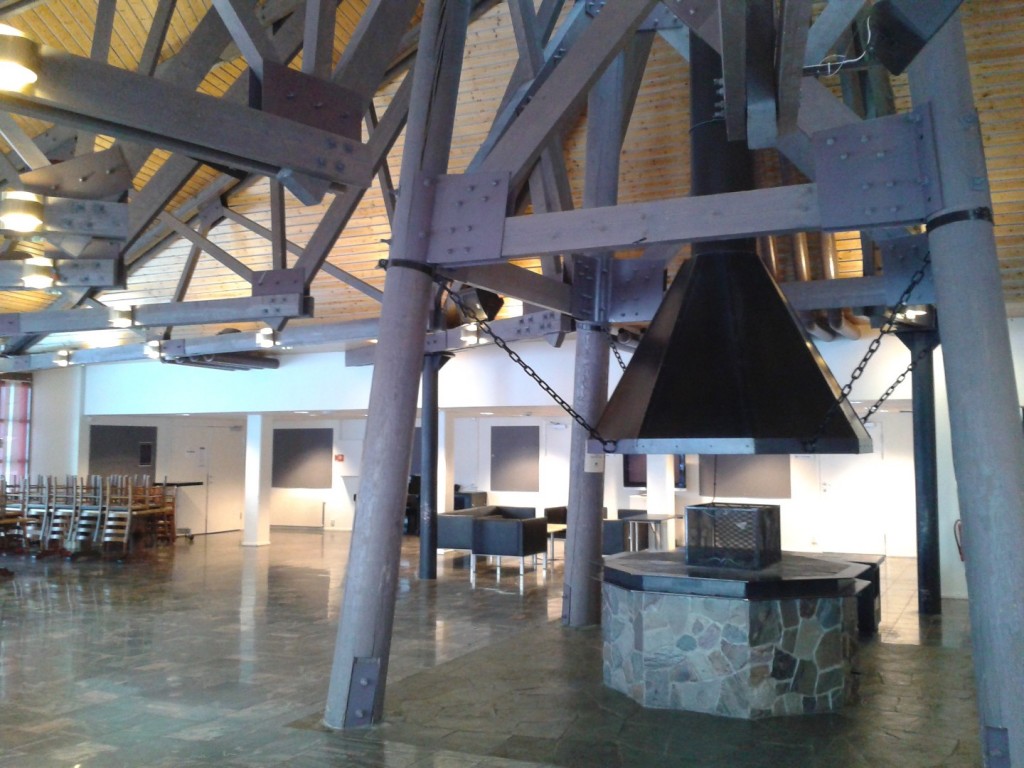We were back to Svalbard for two weeks, flying our planes with UNIS. Blog posts start below.
Monthly Archives: March 2014
Finale
The SUMO should fly but the the tower announces a clear air space for 6:30 PM only. Things in the office at UNIS get packed together, students come and ask questions about the used sensor. At 5 PM we receive a call that we could fly now. The incoming flight from the small settlement at the Svea coal mine on Svalbard has been cancelled.
The station is out of town and so a signal pistol and a rifle are compulsory. It is very unlikely, but not entirely impossible that a polar bear shows up. It is also a strict rule that you will use the rifle only if life is in danger.
The Adventalen webcam was shaking so it is no surprise: Outside in the valley there is a storm. That is probably the cause for the Svea flight cancellation. The anemometer on the mast shows 13m/s. Snow gets blown all around. The darkness starts but we try to do a camera flight as a test. It blows very violently, the plane measures 17m/s in 100m above ground. We have to set maximum speed against the wind in order not to fly backwards. The wind piles up the snow.
The aircraft can fly safely, but measurements do not make much sense. Certainly not with the sensitive sensors. The precision is miserable, the aircraft is buffeted back and forth by the gusts. The forecast tells us that we cannot hope for improvement. So we land with a heavy heart and arrange to meet for a beer.
We pack at the station, at UNIS and finally at the Guest House. We make some food and head for the pub. The other scientists had taken a look at the data and are happy with the values from the night before. The differences between land/sea are significant. The time in the cold was not useless.
The Far Side
Everybody meets at the logistics of UNIS. We are given snow suits, warm gloves, thick boots, face masks, helmets and avalanche beepers. Today we fly even further outside. The airspace is clear already by 4 PM, a good time for a daylight flight with camera. Unfortunately, that is poorly focused and the image is blurry. Except the red/white airplane nose.
The equipment is packed into boxes and loaded on scooter sleds. Everybody is packed well and warm, allocates a scooter and we make our way towards the west, to the fjord.
The operation area is on the other side of Adventalen across from Longyearbyen. The town resides compactly in the valley. The waters are almost always free of ice. The point is to measure the differences in the flow of energy by turbulences through the atmosphere between land and sea. The SUMO is flying profiles over land, over water and in straight lines between land and water.
It is a good “glove strategy” to pull a fleece glove with cut fingertips over a very thin wool glove. Nevertheless, every click and all operations on the laptop take forever. It is even more uncomfortable to mount the two new sensors that need to be transported separately due to their fragility. The fine little screws can not be moved with gloves.
We start at the northern edge and in daylight. It is not so easy to reverse the aircraft over land in a circle with the steep mountains in the back.
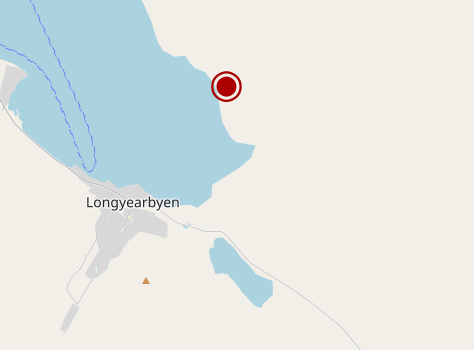
They should also fly in the middle of the valley over the river ice, away from the mountains. Disconnecting and re-attaching of the sensors and packing stuff would take a long time and cause pain. We opt for the “star of Bethlehem” maneuver. The plane flies ahead of us and shows us the way with its bright light. The convoy of snowmobiles follows him. We do the next measurement flight with no intermediate landing right away.
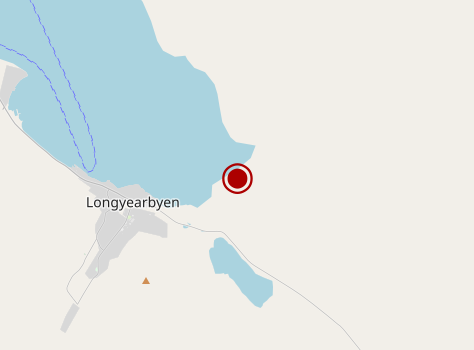
We empty seven plane and two laptop batteries in 3.5 hours. There are funny dance and movement games against the cold. These are the harshest conditions under which we flew so far.
Back at the station: warmness. And the Northern Lights that blink briefly through openings between the clouds.
Good noise
We have a little bit of a sleep deficit from last night. It was not until around 1:30 AM before we left from the station. The temperature and the change of put clothes on/off and going out/back into the station adds to that. Heating pads find its useful application.
Two more quick wire temperature sensors are calibrated over several hours and we equip a second flyer with the new sensors. There is a meeting with the students in the afternoon. They should consider where and how we will measure on Wednesday during the field day.
Four of us leave for the station in the evening. The original plan was to send up the balloon, but we don’t. It takes very long (especially without helping student hands) and someone has to look after it. In addition the cord restricts us in the flight operations. So we concentrate on flights with the SUMO. Initially we circle at different altitudes to find the highest wind speed. The maximum is at about 30m above ground. The SUMO is sent to a “dog-bone” flight path at this altitude and in the direction of wind. It flies a straight line and then turns in a full circle at both ends.
The fast temperature fluctuates like crazy in flight and that is good. In the later analysis it will be correlated with the turbulence/fast wind vector which is measured with the 5-hole probe. Later we get pizza delivered by a snow scooter and it is then five of us. We all stare on the moving temperature curve as it is measured up in the air. The control loops keep the plane reliably at the commanded altitude…which is not exactly high.
It is difficult to bring the aircraft into the narrow horizon section of the webcam. It looks just too far down. The video shows the “dog-bone” circle at the north-western end.
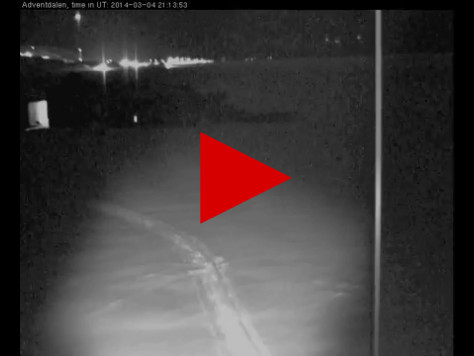
We leave at around eleven. The last landing was followed live from Toulouse with the webcam!
Night flying
We are visited by researchers who will gather meteorological data with a two-engined “real” aircraft in the Arctic over the next three weeks. We had seen them at the airport 5 years ago.
The new “refrigerator proven” fast temperature sensor and the 5-hole turbulence sensor are mounted together on a plane. Unfortunately, a pressure converter/computer denies to work shortly before departure. Replace it with a new unit and try again. Outside at the station the same thing happens, this time the replacement unit appears to be unhappy with the calibration data.
First we fly a couple of demo circles with a standard SUMO for our visitors. Once they are in the air and circle, it is relatively unspectacular. That’s the way it should be. The white lights, red and green LEDs and a bright white flashes 4x for marking. People at UNIS tell us that they have seen the plane over the valley in the night sky.
Today, it is pleasantly cold, only -6°C (20°F) and no wind. No comparison with Saturday. The weekend was unusually cold. It was relatively warm here on Svalbard throughout this winter. The manual start is somewhat critical for the significantly heavier aircraft with additional sensors. Thanks to the heat it can be launched and flown with “bare” fingers. Luckily the fragile 12µm wire survives the landings.
There is also a live webcam with infrared illumination behind the station. If the lighting conditions were suitable, you could have seen us in action there.
Science on Sunday
Today we start even later, it finally is now really the weekend. We make our way to UNIS around noon. We want to test and calibrate the new rapid temperature sensor. The measuring element is a 12µm thick platinum wire. This is only about 20x wider than the wavelength of red light.
It is extremely fast due to the low mass and should measure small turbulences (flux) in the atmosphere. Based on two measuring points, the linear characteristic is recorded. We take the first in an anteroom to a climate chamber in which normally ice cores are sawn and examined. The second we get in an even colder climate chamber of biologists.
We then put the sensor, including autopilot and battery in the coffee kitchen fridge and hope for a quick confirmation of our calibration. Far from it.
The fast sensor (red) and the slow reference (green) oscillate around happily. Nevertheless, the reference adapts, albeit slowly. Once we shield the sensors with a cardboard lid, both temperature measurements are quiet. The inside of a fridge is anything but stable. The temperature has leveled out only after about half an hour.
Flying
Saturday we meet at noon to go out for the first SUMO flights at the station. Last tests, pack the stuff and we leave. The balloon is made ready, the laptop plugged, the planes put together.
Before we can fly the balloon or a SUMO, we need to get a permission from Longyearbyen airport each time. The last commercial jet for Saturday lands over us towards the west. So we can go.
The SUMO is launched manually, goes into Auto1, Auto2 mode and flies its paths. Everything works like a charm. We must be careful not to collide with the cord of the tethered balloon. Therefore, we remain north of the station towards Endalen. One goal of the campaign is to compare the different aircraft and balloon against each other. So we bring one by one in the air and fly them.
The wind freshens up to 12m/s, and thus it is cold as hell in a matter of ten seconds. The snowsuit helps a lot, but with the wind in your face and at your fingers, it is nasty. The fingertips of the gloves are cut-off, so that you can operate the remote control transmitter, laptop or camera. If it gets too cold, it really hurts and it does that for a long time. I forgot how cold cold can be. The weather protective cover of the transmitter is reinforced with duct tape so that the wind no longer blows through.
The SUMO make their rounds, it works. There are three sensors attached to the balloon string on 30, 70 and 110m. The plane flies to the same heights and does three circles at each altitude. It turns dark and the LEDs flash into the valley.
Nice.
Weekend starts
The good news on Friday morning: We finally got the approval for flights. Unfortunately, only up to 120m above ground and flight in the line of sight. Not only is it difficult to get a permit…they are more restricted. We do not got out today. The aircraft are all fully tested and assembled again for the next day.
Due to the special status of Svalbard there is no sales tax on Svalbard. In particular, alcohol is quite cheap for Scandinavians. You can however only buy a certain quota in the supermarket. As a visitor you get to a stamp on your boarding pass on which the amount is ticked.
Today is friday gathering, beer in the cafeteria for an Euro. The dining hall was donated by the mining company and the center looks as one of the wooden coal transportation towers that are everywhere around Longyear. Looks a little as from an Astrid Lindgren story. We sit together with our student group. The fireplace is fueled and it is homey.
Two scientists eventually move the piano to the center, pick up a guitar and sing self-written songs. They sing of vegetarian polar bears and their concerns, the love for Svalbard, and how to constantly bring up new research things because you absolutely must come back to this special place. Or the idea of how zombies are rising out of the tombs of Longyear (the idea came to them when it was attempted to reconstruct the Spanish flu of 1918 from the graves in the permafrost).
This is great. We end up in the “Svalbar”.

